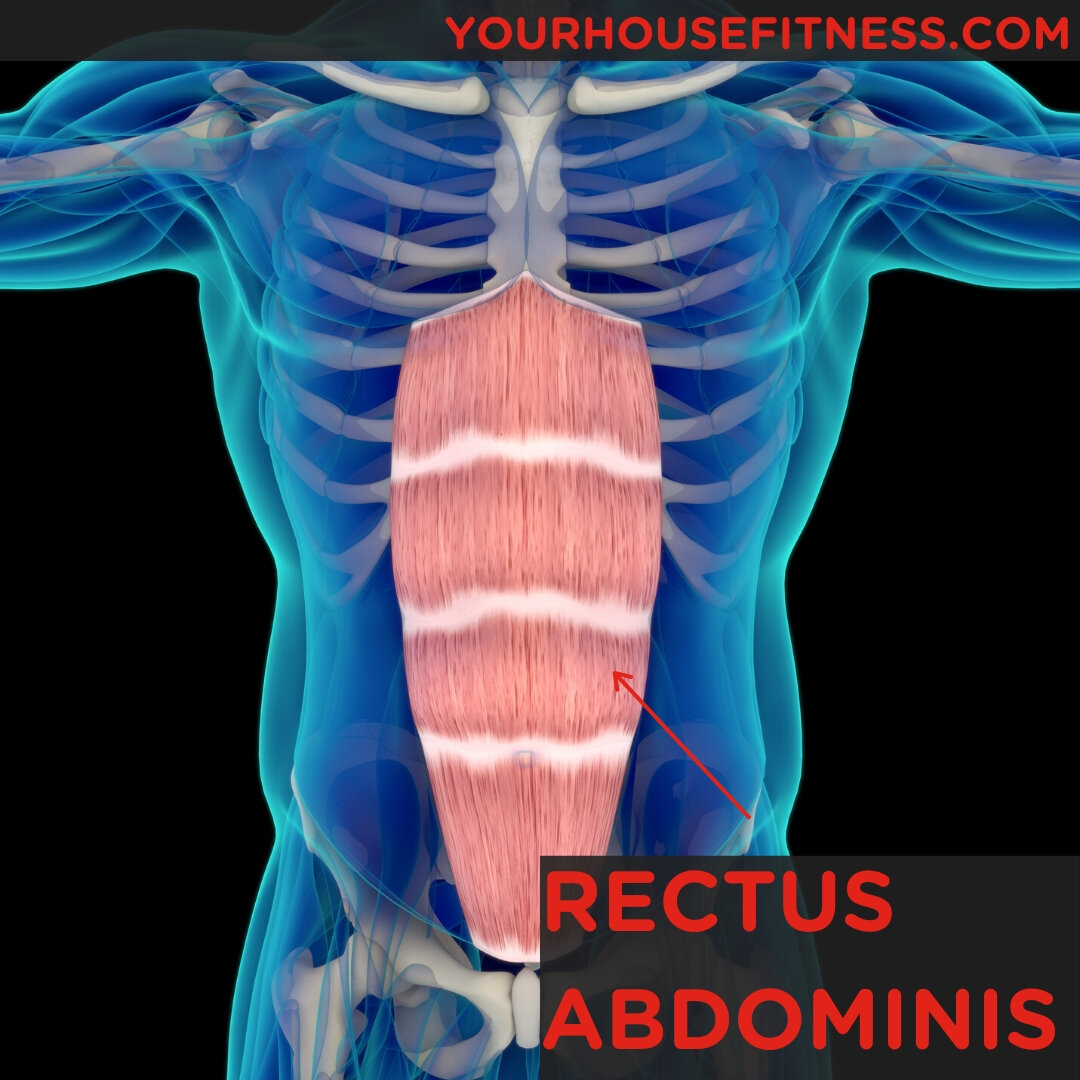Muscle Breakdown: Rectus Abdominis
Table of Contents
What Is the Rectus Abdominis
The Rectus Abdominus is the most superficial muscle of the core, spanning the front side of the torso and is commonly referred to as ‘the abs’. This muscle contains connective tissue that separates six (or sometimes four to eight) short sections of muscle fibers. As a result, in people with low body fat, the Rectus Abdominus can show these separations in what is often described as a ‘six-pack’.
Rectus Abdominis Muscle
Rectus Abdominis Function
The Rectus Abdominis functions primarily as a stabilizer and flexor of the trunk and spine. It helps you to bend forward, lift your hips, and stabilizes movement through the entire body through a variety of movements.
Additionally, the Rectus Abdominis works closely with your internal oblique and external oblique, lower back, and hip flexors to hold our spine in an upright posture. The Rectus Abdominis as well as the connective tissue and many surrounding muscles help to transfer force between our upper and lower body and therefore help us to move.
The Rectus Abdominis is also a crucial muscle involved in Abdominal Bracing, which occurs in most exercises that are focused on increasing muscle mass and strength.
Rectus Abdominis Origin and Insertion
Rectus Abdominis Origin
The Rectus Abdominis originates from the pubic symphysis in the centre of the front side of the pelvis.
Rectus Abdominis Insertion
The Rectus Abdominis inserts on the xiphoid process at the bottom of the sternum and into the connective tissue lining ribs 5-7 (called costal cartilage).
Rectus Abdominis Pain
There are many reasons why one might experience pain in the Rectus Abdominis muscle. A common reason is muscle soreness, which can be experienced up to a few days after an intense workout.
Because of its proximity to major organs, Rectus Abdominis pain may present itself as or interpreted as a result of things like nausea, hunger, and appendicitis.
As well, high intra-abdominal pressures from excessive heavily lifting combined with improper form or programming can result in a bulge or tear to the muscle or connective tissue of the Rectus Abdominis as previously mentioned. Listen to your body and know when it is time to take a break and reduce the load during your exercise routine
Rectus Abdominis Diastasis
Diastasis recti is a separation of the connective tissue between the abdominal muscles. This is a common occurrence during pregnancy, but can also be caused by heavy lifting, particularly with improper technique or bracing of the core musculature. A bulge or tear in the connective tissue as a result of physical activity is often referred to as a ‘sports hernia’.
Rectus Abdominis Diastasis can be recovered through rest and exercises to strengthen the abdominals and other surrounding muscles. However, if the tear is large enough or becomes a chronic issue, surgery may be required to repair the muscle.
Rectus Abdominis Exercises
Multiple exercises will engage the Rectus Abdominis, so you will always have a variety in your exercise routine! Here are some examples of exercises that will engage the Rectus Abdominis:
Abdominal Crunch
Scissor Kicks
Forearm Plank
Lie down flat on your stomach, then lift yourself onto your elbows and toes. This will create a straight line from your head, through your shoulders, spine and hips, to your heels. Your elbows should be at 90 degrees underneath your shoulders. Engage the abdominals to keep your hips up, and the glutes to help keep the pelvis from tilting forward resulting in overextending the lower back. Hold this position for 30 seconds to a minute + depending on your abilities!
The plank is a diverse exercise in itself. Here is a list of 10 plank variations that you can try at home, all of which engage the Rectus Abdominis and other muscles of the core:
Extended Plank
Extended Side Plank
Side Plank with Hip Dip
Plank with Leg raises
Plank with Arm raises
Shoulder Taps
Commando
Knees to Same Elbows
Knees to Opposite Elbows
Abdominal Crunch
Lie on your back with your knees bent and feet flat on the floor. Brace the core and bring your chest towards your knees, but do not make contact. Focus on flexing at hips and using your core to bring the torso towards your legs. The crunch is a modified sit-up, focusing only on lifting the shoulder blades off the ground using the abdominal muscles. Wedging your feet under something to hold them on the ground can make this exercise easier.
Scissor Kicks
Lie down on your back with your hands under your hips. Extend your legs and raise them about 30cm off the floor. Brace the core and alternate crossing one foot above the other- like a pair of scissors. Perform this movement for 30seconds to 1 minute + depending on your abilities.
Rectus Abdominis Stretch
Here are some stretches that will engage your Rectus Abdominis:
Lying Stability Ball Extension
Lying Stability Ball Extension
Lie down on your back with your mid-upper back on a stability ball with your feet on the floor and knees bent at 90 degrees. Extend your back around the medicine ball, lifting your rib cage. You can reach back above your head and place your hands on the floor for support and a further stretch in the core, chest, lats and shoulders.
Revised By Stephanie Zaban

